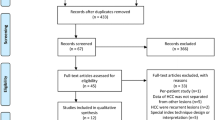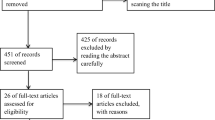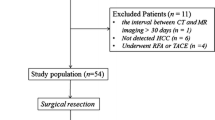Abstract
Objective
To retrospectively assess the value of adding gadolinium-enhanced dynamic imaging to standard ununenhanced magnetic resonance imaging (MRI) for characterising hypoattenuating hepatic lesions that are too small to characterise with multi-detector computed tomography (MDCT).
Methods
Informed consent was waved, and institutional review board approval was obtained. Three hundred and forty-six small (≤2 cm) lesions (63 metastatic, 283 benign) in 183 patients with underlying carcinoma who underwent hepatic MRI after CT were retrospectively analysed. Two radiologists independently reviewed images and diagnoses were graded on an ordinal scale from 1 (definitely benign) to 5 (definitely malignant). Receiver operating characteristic analysis was used. Sensitivity, specificity, positive predictive value (PPV), negative predictive value (NPV) and accuracy were also determined.
Results
The areas under the curve of the ununenhanced images alone and with dynamic images were 0.837 and 0.850 for reader 1 (p = 0.616) and 0.771 and 0.783 for reader 2 (p = 0.700). Descriptive statistical values demonstrated sensitivities of 76% and 80%, specificities of 93% and 95%, PPVs of 69% and 79%, NPVs of 95% and 95% and accuracies of 90% and 92%, respectively.
Conclusion
The value of adding three-phase contrast-enhanced MRI to unenhanced imaging did not reach statistical significance for characterising small hypoattenuating hepatic lesions on MDCT.





Similar content being viewed by others
References
Schwartz LH, Gandras EJ, Colangelo SM, Ercolani MC, Panicek DM (1999) Prevalence and importance of small hepatic lesions found at CT in patients with cancer. Radiology 210:71–74
Brick SH, Hill MC, Lande IM (1987) The mistaken or indeterminate CT diagnosis of hepatic metastases: the value of sonography. AJR Am J Roentgenol 148:723–726
Jones EC, Chezmar JL, Nelson RC, Bernardino ME (1992) The frequency and significance of small (less than or equal to 15 mm) hepatic lesions detected by CT. AJR Am J Roentgenol 158:535–539
Khalil HI, Patterson SA, Panicek DM (2005) Hepatic lesions deemed too small to characterize at CT: prevalence and importance in women with breast cancer. Radiology 235:872–878
Jang HJ, Lim HK, Lee WJ, Lee SJ, Yun JY, Choi D (2002) Small hypoattenuating lesions in the liver on single-phase helical CT in preoperative patients with gastric and colorectal cancer: prevalence, significance, and differentiating features. J Comput Assist Tomogr 26:718–724
Holalkere NS, Sahani DV, Blake MA, Halpern EF, Hahn PF, Mueller PR (2006) Characterization of small liver lesions: added role of MR after MDCT. J Comput Assist Tomogr 30:591–596
Kanematsu M, Semelka R, Matsuo M et al (2002) Gadolinium-enhanced MR imaging of the liver: optimizing imaging delay for hepatic arterial and portal venous phases? A prospective randomized study in patients with chronic liver damage. Radiology 225:407–415
Fleiss JL (1971) Measuring nominal scale agreement among many raters. Psychol Bull 76:378–382
Namasivayam S, Martin D, Saini S (2007) Imaging of liver metastases: MRI. Cancer Imaging 7:2
Kanematsu M, Kondo H, Goshima S et al (2006) Imaging liver metastases: review and update. Eur J Radiol 58:217–228
Fleiss JL (1981) Statistical methods for rates and proportions. Wiley, New York
Landis JR, Koch GG (1977) The measurement of observer agreement for categorical data. Biometrics 33:159–174
Van Beers B, Demeure R, Pringot J et al (1990) Dynamic spin-echo imaging with Gd-DTPA: value in the differentiation of hepatic tumors. AJR Am J Roentgenol 154:515–519
Whitney WS, Herfkens RJ, Jeffrey RB et al (1993) Dynamic breath-hold multiplanar spoiled gradient-recalled MR imaging with gadolinium enhancement for differentiating hepatic hemangiomas from malignancies at 1.5 T. Radiology 189:863–870
Semelka RC, Shoenut JP, Kroeker MA et al (1992) Focal liver disease: comparison of dynamic contrast-enhanced CT and T2-weighted fat-suppressed, FLASH, and dynamic gadolinium-enhanced MR imaging at 1.5 T. Radiology 184:687–694
Hamm B, Thoeni RF, Gould RG et al (1994) Focal liver lesions: characterization with nonenhanced and dynamic contrast material-enhanced MR imaging. Radiology 190:417–423
Yoshida H, Itai Y, Ohtomo K, Kokubo T, Minami M, Yashiro N (1989) Small hepatocellular carcinoma and cavernous hemangioma: differentiation with dynamic FLASH MR imaging with Gd-DTPA. Radiology 171:339–342
Yamashita Y, Hatanaka Y, Yamamoto H et al (1994) Differential diagnosis of focal liver lesions: role of spin-echo and contrast-enhanced dynamic MR imaging. Radiology 193:59–65
McFarland EG, Mayo-Smith WW, Saini S, Hahn PF, Goldberg MA, Lee MJ (1994) Hepatic hemangiomas and malignant tumors: improved differentiation with heavily T2-weighted conventional spin-echo MR imaging. Radiology 193:43–47
Bennett GL, Petersein A, Mayo-Smith WW, Hahn PF, Schima W, Saini S (2000) Addition of gadolinium chelates to heavily T2-weighted MR imaging: limited role in differentiating hepatic hemangiomas from metastases. AJR Am J Roentgenol 174:477–485
Goldberg MA, Hahn PF, Saini S et al (1993) Value of T1 and T2 relaxation times from echoplanar MR imaging in the characterization of focal hepatic lesions. AJR Am J Roentgenol 160:1011–1017
Ito K, Mitchell D, Outwater E, Szklaruk J, Sadek A (1997) Hepatic lesions: discrimination of nonsolid, benign lesions from solid, malignant lesions with heavily T2-weighted fast spin-echo MR imaging. Radiology 204:729–737
Ueda K, Matsui O, Nobata K, Takashima T (1996) Mucinous carcinoma of the liver mimicking cavernous hemangioma on pre- and postcontrast MR imaging. AJR Am J Roentgenol 166:468–469
Tang Y, Yamashita Y, Ogata I et al (1999) Metastatic liver tumor from cystic ovarian carcinomas: CT and MRI appearance. Radiat Med 17:265–270
Kanematsu M, Kondo H, Goshima S et al (2006) Imaging liver metastases: review and update. Eur J Radiol 58:217–228
Outwater E, Tomaszewski JE, Daly JM, Kressel HY (1991) Hepatic colorectal metastases: correlation of MR imaging and pathologic appearance. Radiology 180:327–332
Quillin SP, Atilla S, Brown JJ, Borrello JA, Yu CY, Pilgram TK (1997) Characterization of focal hepatic masses by dynamic contrast-enhanced MR imaging: findings in 311 lesions. Magn Reson Imaging 15:275–285
Danet IM, Semelka RC, Leonardou P et al (2003) Spectrum of MRI appearances of untreated metastases of the liver. AJR Am J Roentgenol 181:809–817
Low R, Gurney J (2007) Diffusion-weighted MRI (DWI) in the oncology patient: value of breathhold DWI compared to unenhanced and gadolinium-enhanced MRI. J Magn Reson Imaging 25:848–858
Koh D, Brown G, Riddell A et al (2008) Detection of colorectal hepatic metastases using MnDPDP MR imaging and diffusion-weighted imaging (DWI) alone and in combination. Eur Radiol 18:903–910
Conflicts of interest
The authors have no potential conflicts of interest.
Funding
This study was supported by a grant of the Korea Healthcare technology R&D Project, Ministry for Health, Welfare & Family Affairs, Republic of Korea (A084120).
Author information
Authors and Affiliations
Corresponding author
Rights and permissions
About this article
Cite this article
Baek, SE., Park, MS., Hong, H.S. et al. Characterisation of small hypoattenuating hepatic lesions in multi-detector CT (MDCT) in patients with underlying extrahepatic malignancy: added value of contrast-enhanced MR images. Eur Radiol 20, 2853–2861 (2010). https://doi.org/10.1007/s00330-010-1872-x
Received:
Revised:
Accepted:
Published:
Issue Date:
DOI: https://doi.org/10.1007/s00330-010-1872-x




